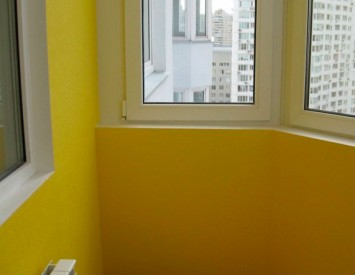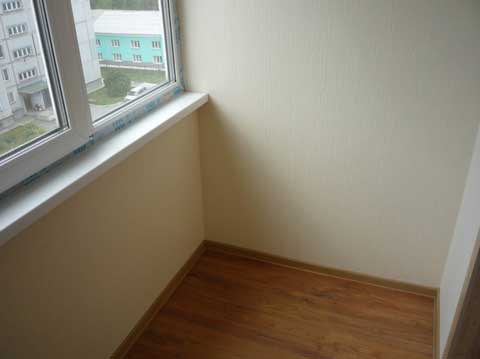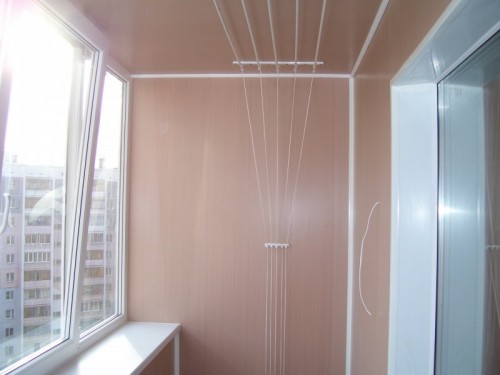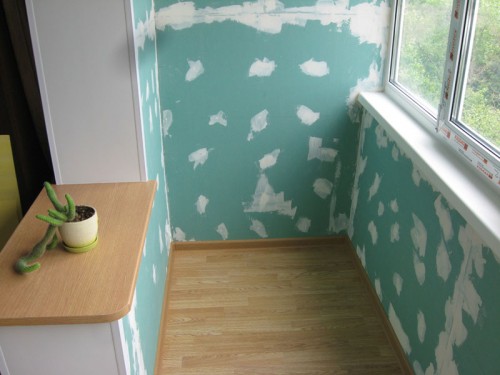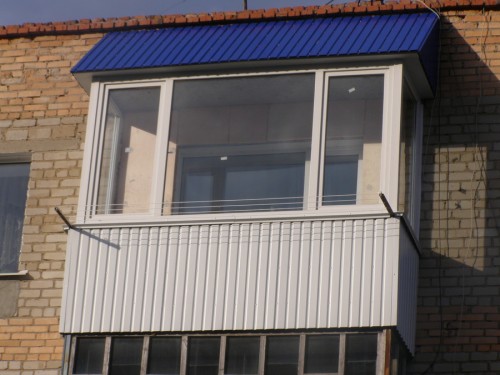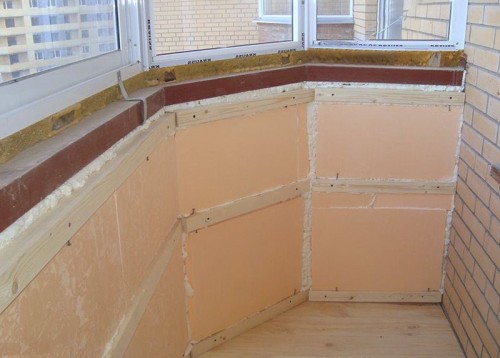Gypsum cardboard is an ideal material to realize the most original and interesting interior solutions. Recently, this material has been used everywhere. Fortunately, the so -called “moisture -resistant drywall” has appeared - it can be safely used even in the bathroom, even on the balcony - after all, he is not afraid of high humidity and nonsense. In addition, working with this material is not at all difficult. Thanks to the small dexterity, the finish of the balcony with a drywall can even the most inexperienced builder-novice.
Content
Balcony trim with drywall
Gypsum plasterboard on the balcony is a great solution for an isolated ordinary balcony. But do not lay inconceivable hopes on drywall: to protect the room from rain and wind, be sure to use insulation and sealed double -glazed windows.
Advantages of drywall
- Lack of an allergic reaction.
- Fire resistance.
- Providing normal microclimate.
- Thermal insulation.
- Good base for finishing.
- Beauty.
What to pay attention to before starting work
- Do not overload the balcony plate, as it has no additional supports.
- Part of the load can be distributed to the metal frame - it must be made continuous and fixed on the bearing wall.
- Refuse brick - do not overload the balcony additionally.
Internal lining of the balcony with drywall
Before starting work on lining the balcony with drywall, it is necessary to carry out glazing work. On the balcony, you can use window frames from any material: wood, plastic, metal. As for the decoration, diversity also reigns here: the lining (both plastic and wooden), Euro -carrier, drywall, cork, siding, MDF, PVC or plastic panels. Such materials will last decades, they do not require special service, moreover, installation will not be difficult. Nevertheless, when everything rests on the price of the material and the main criterion for the choice is the price-quality ratio, most often the scales bowl are inclined towards drywall. In addition, the insulation of the balcony with drywall today is used everywhere.
External lining of the balcony with drywall
Drywall is also used for external balcony skin. Before starting repair work, decide whether the outer decoration of the balcony you have planned will be in harmony with the appearance of the building, since an unsuccessful decision will lead to the fact that there will be complaints from either home, either from neighbors, or from supervisory employees.
The outer sheathing of the balcony is necessarily performed using moisture resistant material, which has strength and durability. This material should be convenient in operation. After casing with such a material, the balcony will not only become reliable and warm, but also outwardly very attractive. A plasterboard balcony - a photo can be seen below, has all the above advantages.
What may be needed
- Waterproofing film (only, roofing material).
- Vapor barrier film.
- Wooden rails (20x40) or metal profile.
- Hydraulic level.
- Dowel-gvo (or dowel-shurups).
- Insulation (polystyrene polystyrene, mineral wool, ecothermix, URSA XPS).
- Wood hacksaw.
- Scabbard for metal.
- Scissors for metal.
- Hammer.
- Drill.
- Scurgery.
- Electric jigsaw.
- Stapler for furniture.
The sequence of work
- Free the balcony. Yes, just like that - completely free. Many newcomers, thinking that while they work with one wall, it will be possible to move all the trash to another. Absolutely lost option. Spend it better for one day, but completely free the room.
- On the walls, fix the material for waterproofing. It can be either a waterproofing film, or an ordinary roofing material or only.
- On the walls and ceiling, install the crate. For this, wooden rails or a metal profile is installed perpendicular to the skin (approximately at a distance of 30 to 50 cm). If you still use a tree, then do not forget to leave thermal gaps (no more than 30 mm). Thanks to this maneuver, the rails will be protected from warping, when the expansion and shrinkage of the tree will occur. The lower rail must be attached at a height of 5 cm from the floor, and the upper one is at the same level with the fastening of the ceiling crate.
- Perform mount. The crate is fixed using dowel-grooves (screws). In order for the installation to have an even surface, do not forget to apply the level.
- Lay the insulation. In the gaps between the crate as a heater, various material can be used. After insulation, it is necessary to lay a vapor barrier film.
- Perform the editing of the cladding.
Hypsum cardboard sheathing is a universal solution for the balcony, since this material can be covered with liquid wallpaper or use decorative plaster. A good solution is a drywall ceiling on the balcony.
Installation of drywall
- Gypsum cardboard is a sheet material, so you must carefully measure the size thoroughly, and then cut off the right number of drywall sheets.
- The plasterboard is attached to the metal frame with self -tapping screws - special screws to perform such work.
- Before performing the ceiling cladding, you need to conduct wiring, protecting it with corrugated pipe.
- All the seams that remained after connecting the sheets need to be thrown, and then glued with a reinforcing ribbon.
- Putting the recesses from self -tapping screws are shown with putty.
- After the seams dry, proceed to putty the entire surface or perform another type of finish.
Tips that will come in handy when performing work
- Outside, the lining of the balcony is performed before glazing work is carried out.
- The insulation can be used the same as in the interior decoration - polystyrene foam, minvat, ecothermix, URSA XPS. When choosing a heater, study the properties of the material carefully - it must have a strand of qualities necessary for external use: to tolerate low temperature and be moisture resistant.
- To protect the concrete slab from the water, which will drain on the skin after rains, it is necessary to install water -polling.
- The higher the balcony is located, the more safety measures must be taken when performing its skin. Mandatory is the use of a mounting construction belt and a special safety cable.
- A qualitatively performed lining of the balcony - both internal and outer - will give reliable sound insulation.
